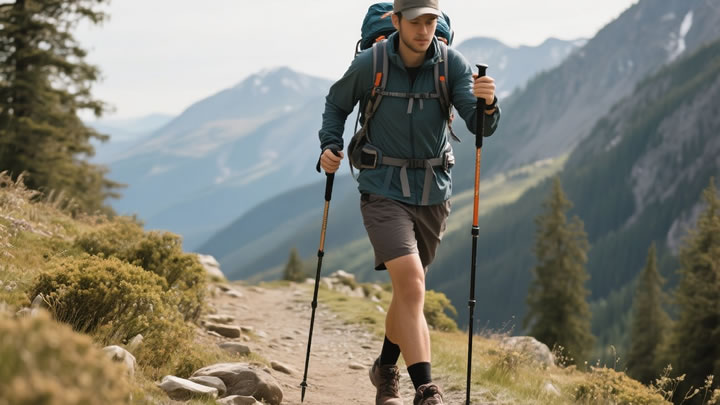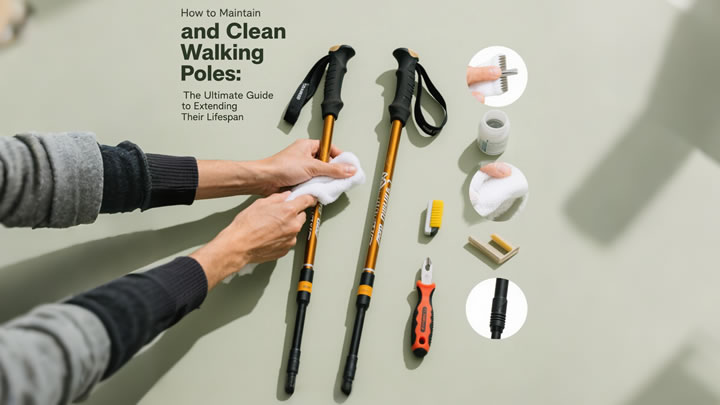Can You Use One Walking Pole? A Comprehensive Guide to Solo Pole Hiking
The image of a hiker with two trekking poles has become standard on trails worldwide, but many outdoor enthusiasts wonder if a single pole could suffice. The straightforward answer is yes, you can absolutely use one walking pole, and for certain situations and individuals, it may even be the preferred choice. However, understanding the trade-offs between using one pole versus two is crucial to making an informed decision that aligns with your hiking style, physical needs, and trail requirements.

The Benefits of Using a Single Walking Pole
Opting for one pole offers several distinct advantages that make it a compelling option for many hikers:
- Versatility and Freedom: The most significant benefit is having one hand consistently free. This is invaluable for photographers needing to quickly capture a shot, hikers who frequently check maps or GPS devices, parents needing to hold a child's hand, or anyone navigating technical terrain that requires handholds.
- Lightweight and Simplified Gear: Carrying one pole obviously cuts your gear weight and bulk in half. For ultralight hikers or those on simple trails where minimal support is needed, this reduction can be meaningful. It's also one less piece of gear to manage, adjust, and store.
- Adequate for Light Support: A single pole provides a substantial boost in stability compared to using no poles at all. It acts as a reliable "third leg" for probing uncertain ground, testing water depth during stream crossings, or providing a quick point of balance on uneven terrain.
- Transitional Aid: For beginners hesitant to commit to two poles or individuals rehabilitating from an injury on one side of their body, a single pole serves as an excellent transitional tool to gauge the benefits of pole usage.
The Limitations and Biomechanical Drawbacks
While functional, using one pole comes with inherent limitations that are important to acknowledge:
- Asymmetrical Strain: This is the primary concern. Hiking with a single pole creates an uneven workload distribution. The side of your body using the pole will experience more engagement in the arm, shoulder, and back, while the unsupported side continues to bear the full impact on the leg and knee. Over long distances, this can lead to muscle imbalances or soreness.
- Reduced Joint Protection: The biomechanical magic of two poles is their ability to symmetrically offload weight from both the knees and hips during descents. A single pole cannot provide this balanced relief. The joint-protection benefits are effectively cut in half, if not more, as the unsupported leg receives no assistance.
- Less Propulsive Power: On uphill sections, two poles work in concert with your legs to provide a powerful, rhythmic propulsion. A single pole offers minimal assistance in increasing your pace or efficiency on climbs.
- Compromised Stability on Technical Terrain: In truly challenging environments—such as steep, loose scree slopes or slippery, rocky descents—a single point of contact is far less stable than the two additional points provided by a pair of poles.
Optimal Technique for Single Pole Use
To maximize the benefits and minimize the drawbacks, technique is key:
- Switch Sides Regularly: To avoid asymmetric fatigue, make a conscious effort to switch the pole from one hand to the other every 15-20 minutes. This distributes the workload more evenly across your upper body.
- Use the Opposite Arm/Leg Rhythm: Just as with two poles, you should plant your single pole in sync with the opposite foot. When your left foot steps forward, your right hand should plant the pole. This creates a natural, stabilizing counter-balance.
- Focus on the Push: Don't just use the pole as a leaning post. Actively push down and back on the strap during the "power phase" to engage your upper body and create a slight propulsive force.
When is One Pole the Ideal Choice?
A single walking pole shines in these specific scenarios:
- Light Day Hiking on well-maintained, non-technical trails.
- Urban Walking or Fitness Walking where you want light support but also need hand freedom.
- Travel and Sightseeing where portability and one-handed use are priorities.
- Specific Activities like trail running on moderate terrain or approaches to climbing routes where you may need a free hand.
The Verdict: One Pole vs. Two
Think of it as a spectrum of support:
- No Pole: Maximum freedom, minimum support.
- One Pole: A balanced compromise, offering moderate support with retained freedom.
- Two Poles: Maximum stability, joint protection, and efficiency, with reduced hand freedom.
For the vast majority of serious hiking, backpacking with a heavy load, or navigating steep and technical terrain, two poles are unequivocally superior for joint preservation and overall stability. However, a single walking pole is a perfectly valid, versatile, and highly useful tool for the less demanding moments on the trail. It is a testament to the principle that the best gear choice is always the one that best fits your personal needs on any given day.






